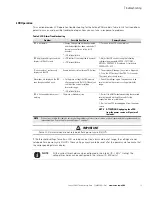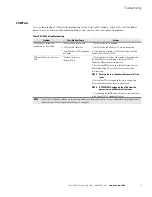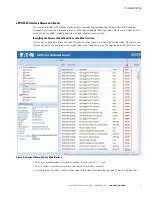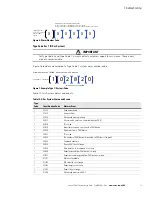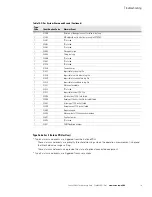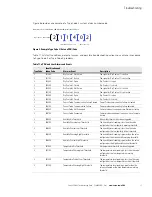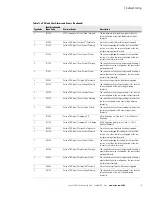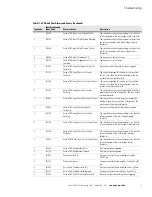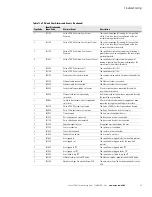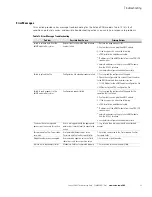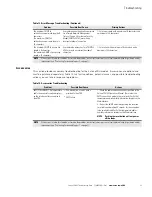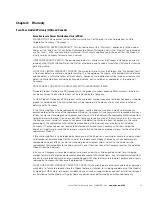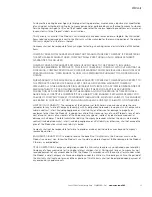
Troubleshooting
Eaton ePDU G3 Troubleshooting Guide P-164000278—Rev 1
www.eaton.com/ePDU
23
Accessories
This section provides accessory troubleshooting for the Eaton ePDU models. (Accessories are optional and
must be purchased separately.) Table 13 lists fault conditions, potential causes, and possible troubleshooting
actions you can take in response to problems.
Table 13. Accessories Troubleshooting
Problem
Possible Root Cause
Actions
EMP (P/N: EMP001): No temperature
and/or humidity information displays
on the interface after connection to
the ePDU
l
Communication issue: no data is
provided to the ePDU
l
EMP failure
1 - Check the cables and connection as specified in the
Eaton ePDU G3 Operations Manual
. (Ensure that the
EMP connection is made to the serial port.) Verify that
temperature and/or humidity information displays on the
Web interface.
2 - Restart the eNMC module by pushing the recessed
reset button and waiting 40
seconds for the connection
to be re-established. Verify that temperature and/or
humidity information displays on the Web interface.
NOTE
Pushing the reset button will not power
off the loads
.
NOTE
If the actions listed in this table do not resolve the problem, contact customer service or a local representative for guidance and/or
replacement (see “Contacting Service and Support” on page 7).
The minimum SNMP v3
authentication password length is 8
characters.
The maximum SNMP v3
authentication password length is
24 characters.
User entered an authentication password
for a Simple Network Management
Protocol Version 3 User-based Security
Model (SNMPv3 USM) user with an
incorrect number of characters
1 - Enter a password with a minimum of 8 characters and
a maximum of 24 characters.
The minimum SNMP v3 privacy key
length is 8 characters.
The maximum SNMP v3 privacy key
length is 24 characters.
User entered a privacy key for a SNMPv3
USM user with an incorrect number of
characters
1 - Enter a key with a minimum of 8 characters and a
maximum of 24 characters.
NOTE
If the actions listed in this table do not resolve the problem, contact customer service or a local representative for guidance and/or
replacement (see “Contacting Service and Support” on page 7).
Table 12. Error Message Troubleshooting (Continued)
Problem
Possible Root Cause
Primary Actions




